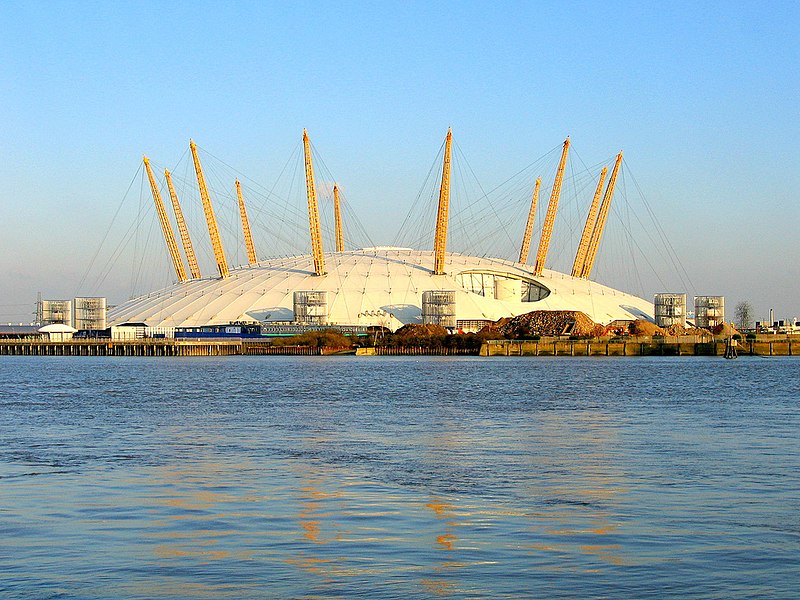Hello ladies and gents this is the Viking telling you that today we are talking about
THE MILLENNIUM DOME
The Millennium Dome, also referred to simply as The Dome, is the original name of a large dome-shaped building originally used to house the Millennium Experience, a major exhibition celebrating the beginning of the third millennium. It is the ninth largest building in the world by usable volume.
Located on the Greenwich Peninsula in South East London, England, the exhibition was open to the public from 1 January to 31 December 2000. The project and exhibition was highly political and attracted barely half the 12 million customers its sponsors forecast, so was deemed a failure by the press. All the original exhibition elements were sold on or dismantled.
In a 2005 report, the cost of selling the Dome and surrounding land (which increased to 170 acres from the initial offering of the 48 acres enclosed by the Dome) and managing the Dome until the deal was closed was £28.7 million. The value of the 48 acres occupied by the Dome was estimated at £48 million, which could have been realised by demolishing the structure, but it was considered preferable to preserve the Dome. The structure itself still exists, and it is now a key exterior feature of The O2.
The Prime Meridian passes the western edge of the Dome and the nearest London Underground station is North Greenwich on the Jubilee line.
Architecture
The dome is one of the largest of its type in the world. Externally, it appears as a large white marquee with twelve 100 m-high yellow support towers, one for each month of the year, or each hour of the clock face, representing the role played by Greenwich Mean Time.
In plan view it is circular, 365 m (one metre for each day in a standard year) in diameter. It has become one of the United Kingdom's most recognizable landmarks. It can be identified on satellite images of London. Its exterior is reminiscent of the Dome of Discovery built for the Festival of Britain in 1951.
The architect was Richard Rogers and the contractor was a joint venture company, McAlpine/Laing Joint Venture (MLJV) formed between Sir Robert McAlpine and Laing Management. The building structure was engineered by Buro Happold, and the entire roof structure weighs less than the air contained within the building.
Although referred to as a dome it is not strictly one as it is not self-supporting, but is, in fact, a giant big top, the canopy being supported by a dome-shaped cable network, from twelve king posts. For this reason, it has been disparagingly referred to as the Millennium Tent. The twelve posts represent the twelve months of the year, another reference to time in its dimensions, alongside its height and diameter.
The canopy is made of PTFE-coated glass fibre fabric, a durable and weather-resistant plastic, and is 52 m high in the middle – one metre for each week of the year. Its symmetry is interrupted by a hole through which a ventilation shaft from the Blackwall Tunnel rises.
The critic Jonathan Meades has scathingly referred to the Millennium Dome as a "Museum of Toxic Waste", and apart from the dome itself, the project included the reclamation of the entire Greenwich Peninsula. The land was previously derelict and contaminated by toxic sludge from East Greenwich Gas Works that operated from 1889 to 1985. The clean-up operation was seen by the then Deputy Prime Minister Michael Heseltine as an investment that would add a large area of useful land to the crowded capital.
And as always have a chilled day from the Viking

Comments
Post a Comment